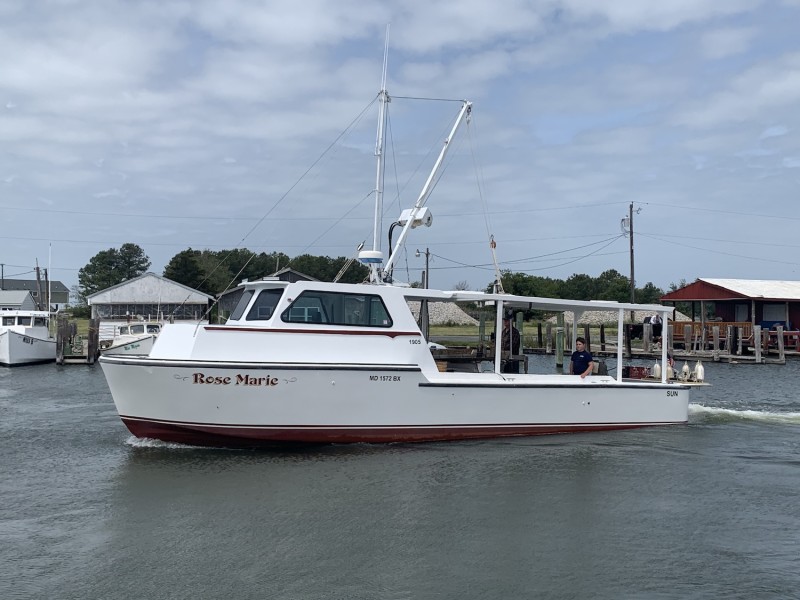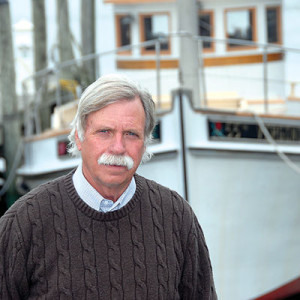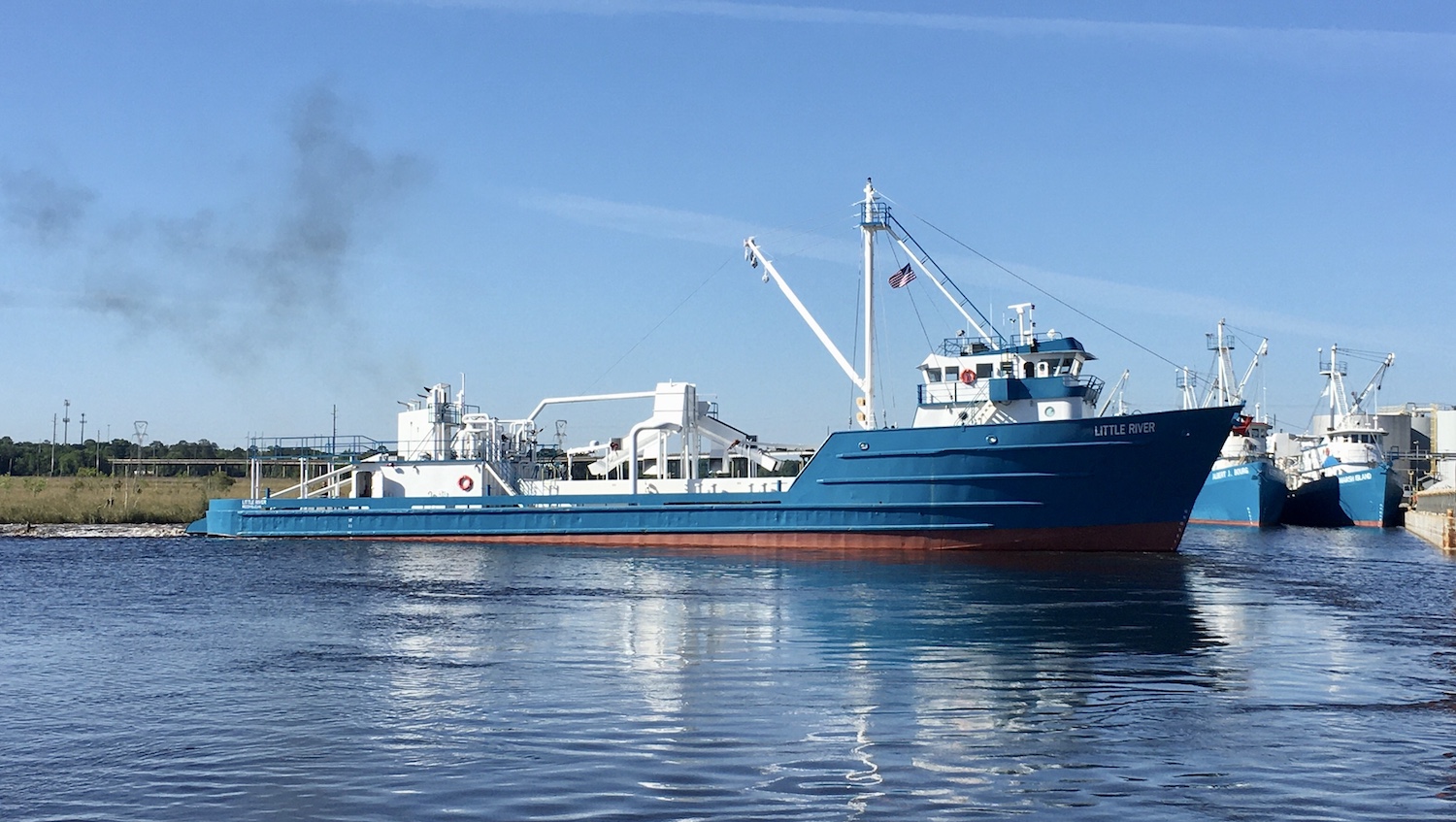Omega Shipyard at Moss Point, Miss., delivered the 180' x 40' x 7' menhaden steamer Little River to the Omega Protein plant in Reedville, Va., to fish the Chesapeake Bay and Atlantic Ocean.
The vessel was motored in April from Moss Point, up the Atlantic Coast to the plant and now Omega’s corporate headquarters in Reedville. The firm started fishing the vessel in May.
The steel hull vessel was converted from an offshore oil supply vessel on the Gulf of Mexico named Black Diver II. Little River is powered by two 399 Caterpillar Diesel engines rated together at 2,250 hp, working through 4:1 ratio Caterpillar marine reduction gears.
There are two generators on the boat powered by two new John Deere 6068 Tier III engines, 150 kw. The vessel will travel at 12 knots consuming 100 gallons of fuel per hour. Little River has a fuel capacity of 9,000 gallons.
The conversion on the Little River was almost identical to what was done at the yard on the F/V Carters Creek in 2017 (See ATY, NF June 2017), says Tim Milligan general manager of Omega Shipyard.
“We upgraded the joiner package on Little River with new interior work, new beds, walls, heads, pilothouse and galley,” said Milligan.
The vessel has state rooms and berths to accommodate 20 crew members, and the boat is U.S. Coast Guard certified to carry 20. The vessel has 10-ton central air conditioning units; heating strips; 5,000 gallons of portable water capacity, and 574 gallons of lube oil capacity. Electronic equipment will include an AIS autopilot control; color chart plotter; three VHF radios; two radars; and lounges will have TV, VCR and DVD.
Little River has a modern stern slide system for carrying and off-loading purse boats used to fish the purse net. This involved major design and construction work on the stern, requiring two feet of stern deck to be added to the boat.
The boatyard is currently working on a conversion of the F/V Grand Caillou. The vessel will be used as a carry boat, home port out of Moss Point and work in Omega’s gulf menhaden fishery. “She will have the capability to pump fish from another vessel’s fish hold or directly from the nets of other fishing boats,” says Milligan.
“If needed, with a few modifications, we could convert her back to a fishing boat,” he says.

Moving up to Maryland, Eugene Evans of Evans Boat Repair in Crisfield turned over the operation of the firm in 2017 to his son David and grandson, David Jr.
Over the last few years, Evans, 67, has been oystering and crab scraping in a 30-foot deadrise. Over the winter, he built himself a new solid glass 40' x 12' x 28" fishing vessel to patent tong and dredge for oysters in winter and scrape for peeler crabs in spring and summer.
Several years ago, a firm in Oklahoma City hired Evans to design and build a flat-bottom “scow style” tour boat to carry a maximum of 50 passengers on a lake.
“I designed it and built a mold for it and we built a couple of boats for them,” says Evans. “When I started thinking about my new boat, I knew I needed a larger hull size for more house space and I needed a shallower draft boat for crabbing.
“I thought the scow style hull might work for me,” says Evans. The hull style enabled him to increase side height on his new boat so he could install a roomy house. By adding some V into the bottom, he eliminated pounding associated with a flat bottom when underway. The modified bottom also gave him the shallower draft he wanted.
Interestingly, Evans installed the V in the bottom by cutting the bow portion out of the bottom of an old Chris Craft pleasure vessel and fiberglassed it to the scow bottom.
The new vessel is powered by a Cummins Diesel Engine rated at 210 mph working through a 2:1 502 Twin Disc reduction gear. During test runs in May, the boat reached a high speed of 22 mph.
The house on the boat is filled with home comforts as Evans has installed a head and shower, hot and cold running water in the galley and head, a twin mattress bed, and an oil furnace along with a heater that works off the engine to keep him warm in the winter.
“When I go to the Patuxent River to oyster next winter, I want to be comfortable,” says Evans. Working the Patuxent on western shore of Chesapeake Bay requires overnight stays by Evans and other watermen who live and have to travel from the Eastern Shore of Maryland.
The last two years, Evans has driven a camper over, worked his 30-foot boat during weekdays and stayed in the camper at night. “Now I can go and be comfortable and not have the additional daily cost of having to pay for a spot for my camper,” he says.







